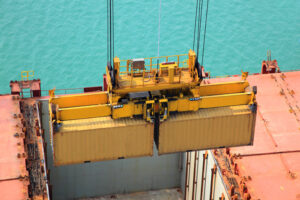Maritime Transportation
Countries with maritime borders and ports can utilize maritime air transportation, rail, and road transportation for exporting and importing goods. This method of transportation in Iran, which has maritime borders to the north and south with several neighbouring countries, is considered an efficient means for exporting and importing goods. In fact, any transfer of goods by ship and other maritime equipment is referred to as sea cargo clearance, which includes the movement of goods on the sea, rivers, lakes, and any other navigable waterway. Due to numerous advantages, maritime transportation is consistently recognized as a priority in the logistics of goods.
Sea Cargo Clearance
Similar to the regulations governing the transportation of goods by land and air in customs, specific laws have been formulated for maritime transportation as well. The process of overseeing the execution of export and import laws for goods transported by sea, established by the Customs Affairs Supervision Organization of Iran, is referred to as the protocol for sea cargo clearance.

Types of Sea Cargo Transportation Methods
The differences in cargo transportation methods by sea are related to the variation in how goods are transported across the sea. However, various sea cargo transportation methods include the following:
Transhipment Method
Transhipment is a common method of sea transportation where goods are transferred from one ship’s containers to another without the need for loading and unloading.
Chartering Method
This method is primarily used for transporting goods such as cotton, sugar, flour, etc., which do not require packaging. The transportation of goods in the chartering method is done by leasing a ship.
Groupage and Project Cargo Method
Another sea freight transportation method is groupage. In this method, small-sized goods with different weights and volumes are sent from Iran to other locations as project cargo. Goods in this method can share space with other companies’ bulk cargo and be transported jointly.
Cross Stuffing Method
Sometimes it is not possible to send goods directly from the country of origin to the destination. In such cases, a third port acts as an intermediary in the transportation process, and this type of transfer is called cross-stuffing or intermediation.
Benefits of Maritime Transportation
The majority of global trade is conducted through seas and oceans. The most significant advantages of maritime transportation include:
- Cost-Effective
- Versatility in cargo movement
- Transportation of large goods
- High security
- Mechanization and standardization
- Environmental pollution reduction


